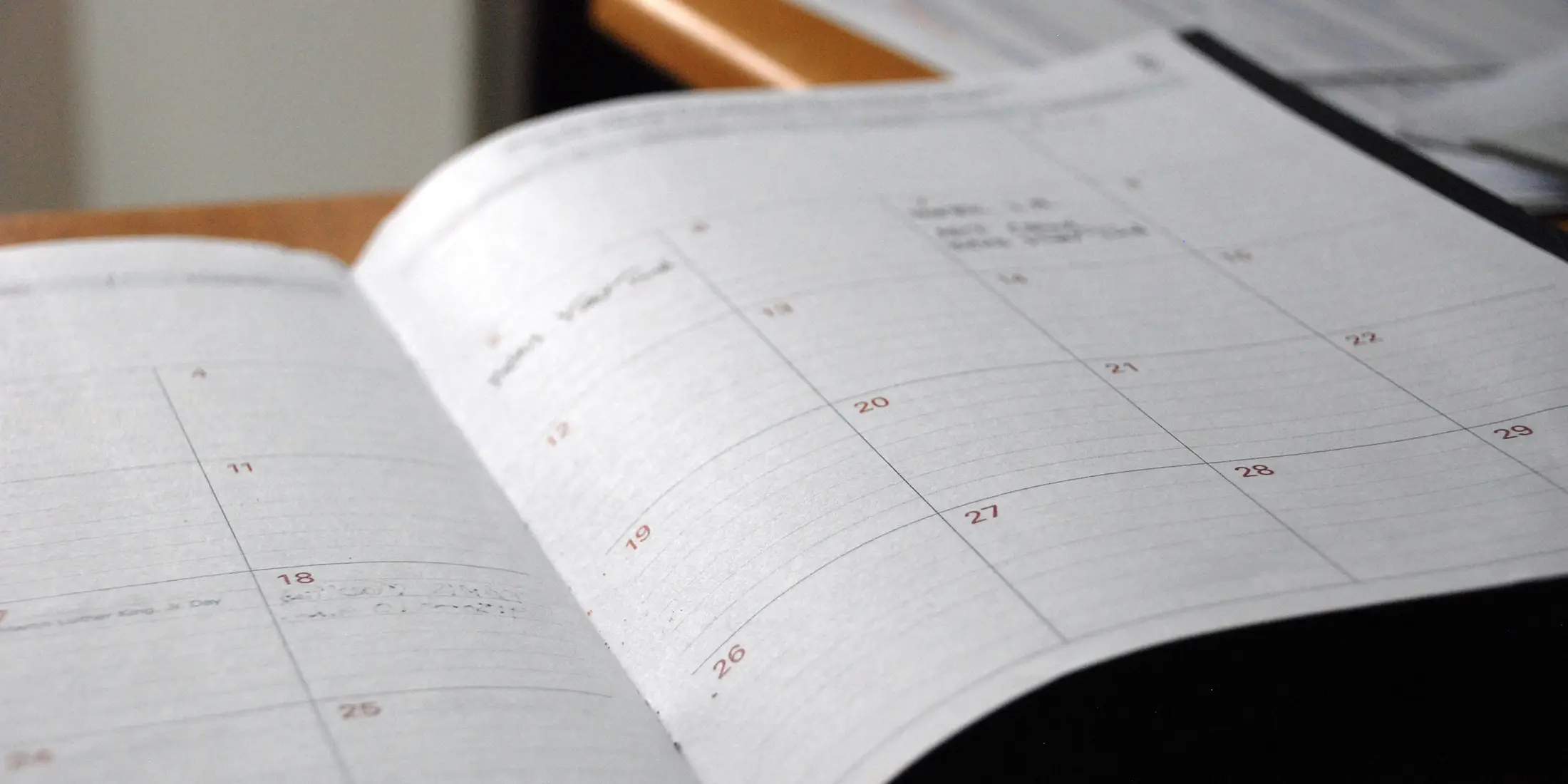It's spring, which means that application volume has slowed down considerably. The majority of applicants have submitted deposits and know where they'll be attending law school this fall, and congratulations to each of them!
However there are still plenty of people who haven't made that final determination yet; and just as many who are on waitlists, wondering if they'll get in. Some people haven't finished applying yet—in fact there are at least 67 law schools still accepting applications for their Fall 2019 entering class! Let's take a look at some data which may be relevant to those people.
As of June 1, we have approximately 95% of our final application volume. Total applications are down 1.58% year over year. 86 schools have seen an application volume increase, 8 have seen no change, and there has been an application decrease at 108 schools.
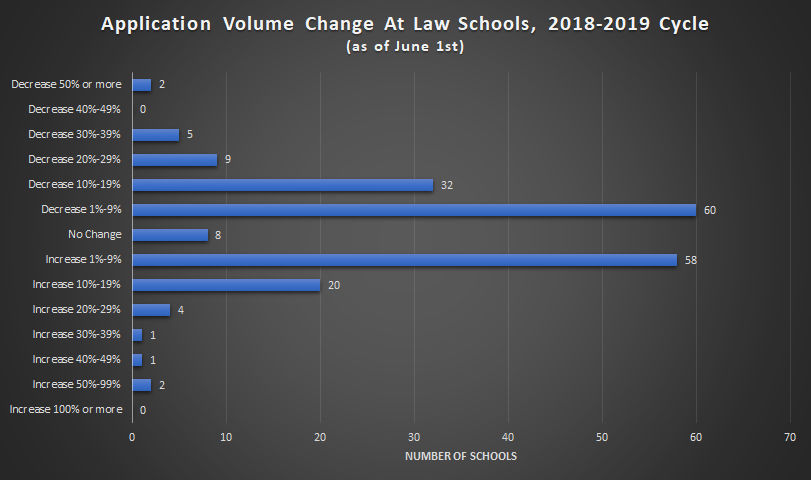
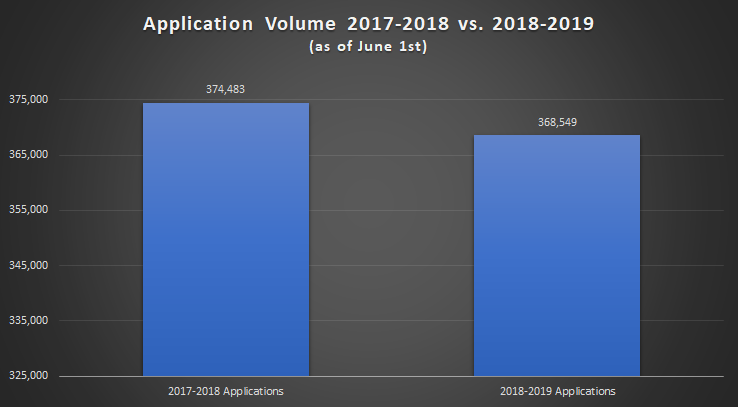
We've talked before about this year's trend of decreasing applications per applicant. If the cycle ended today it would set a record for the lowest number of applications per applicant since 2011-2012; as of June 1st that number was 6.21.
What about the applicants themselves? Well LSAC has provided a handy chart showing LSAT category volume compared to last year. We've also created a graph to show the total applicant change.
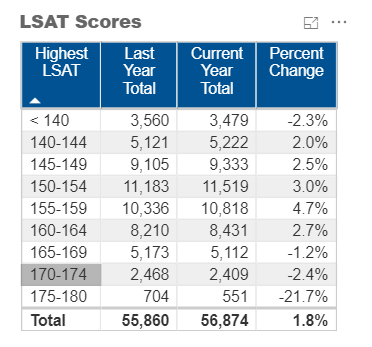
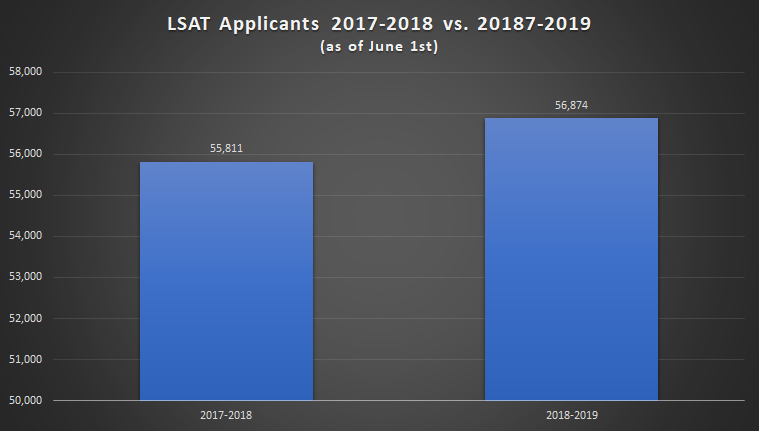
As you can see, our total number of LSAT applicants has increased. This increase is primarily driven by mid-range scorers; especially the increase in 155-159 scorers. Top scorers, those at 165+, are down by 3.27% from last year. This is a factor driving the increased waitlist movement we've seen compared to last year.
The March LSAT has added to our applicant pool in a way not seen in previous cycles. Prior to the release of March test results, our trend was towards an overall decline in LSAT applicants compared to the prior year. March reversed that trend quite abruptly. Since the date March scores were released, we have seen a net increase of over 2,000 LSAT applicants. It is reasonable to assume this volume increase is driven primarily by those March test takers, for a number of reasons. The January LSAT was earlier than the corresponding test last year, which was in February. This would have moved primary application volume for that test forward. Further, the January LSAT saw a low share of first time takers to add to the applicant pool; only 46%. And finally, the increase in volume matches the release of March scores perfectly. This is good news for 2019-2020 applicants. The more March takers apply this year, the fewer will be in the applicant pool in the upcoming cycle.
LSAT applicants aren't the only measure of cycle volume. With 40 law schools now accepting the GRE for admissions, we've seen an uptick on volume from non-LSAT applicants this cycle that has lead to increasing differences between LSAT applicant volume and total applicant volume.
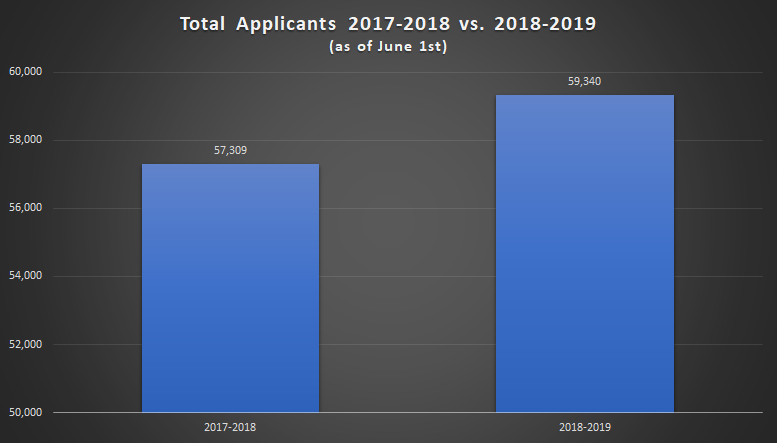
As of June 1, there has been a 3.54% increase in total applicants compared to the 2017-2018 cycle.
Non-LSAT applicants number 2,466 individuals—up by 64.5% from last cycle. They are approximately 4.16% of all applicants to date. We believe a significant number of those individuals are GRE applicants, for obvious reasons. Now, a caveat on that number. It will decrease following the June LSAT administration, as it has for each prior LSAT administration, both due to applicants without any test score taking the LSAT, and applicants with a GRE deciding to take an LSAT. However, the total number of applicants without an LSAT will be decidedly up by the end of this application cycle, as will be the number of applicants.
If you're looking for a simple way of visualizing cycle volume to this point, here it is:

Thus far, this is a relatively flat cycle with interesting volume changes in specific score bands, and notable growth in non-LSAT applicants (which was to be expected). The growth in 150-164 scorers is particularly good news for schools concerned by the recent ABA decision to more strongly tie bar passage rates to accreditation.
We will continue to monitor cycle volume, though at this point changes will be driven almost entirely by the arrival of major application deadlines, the next of which is the June 30/July 1 deadline for 20 schools. We'll also post a full cycle recap when volume is more final.
And for those of you still waiting on final decisions, we say: good luck!
Written by Justin Kane and Mike Spivey


.png)





